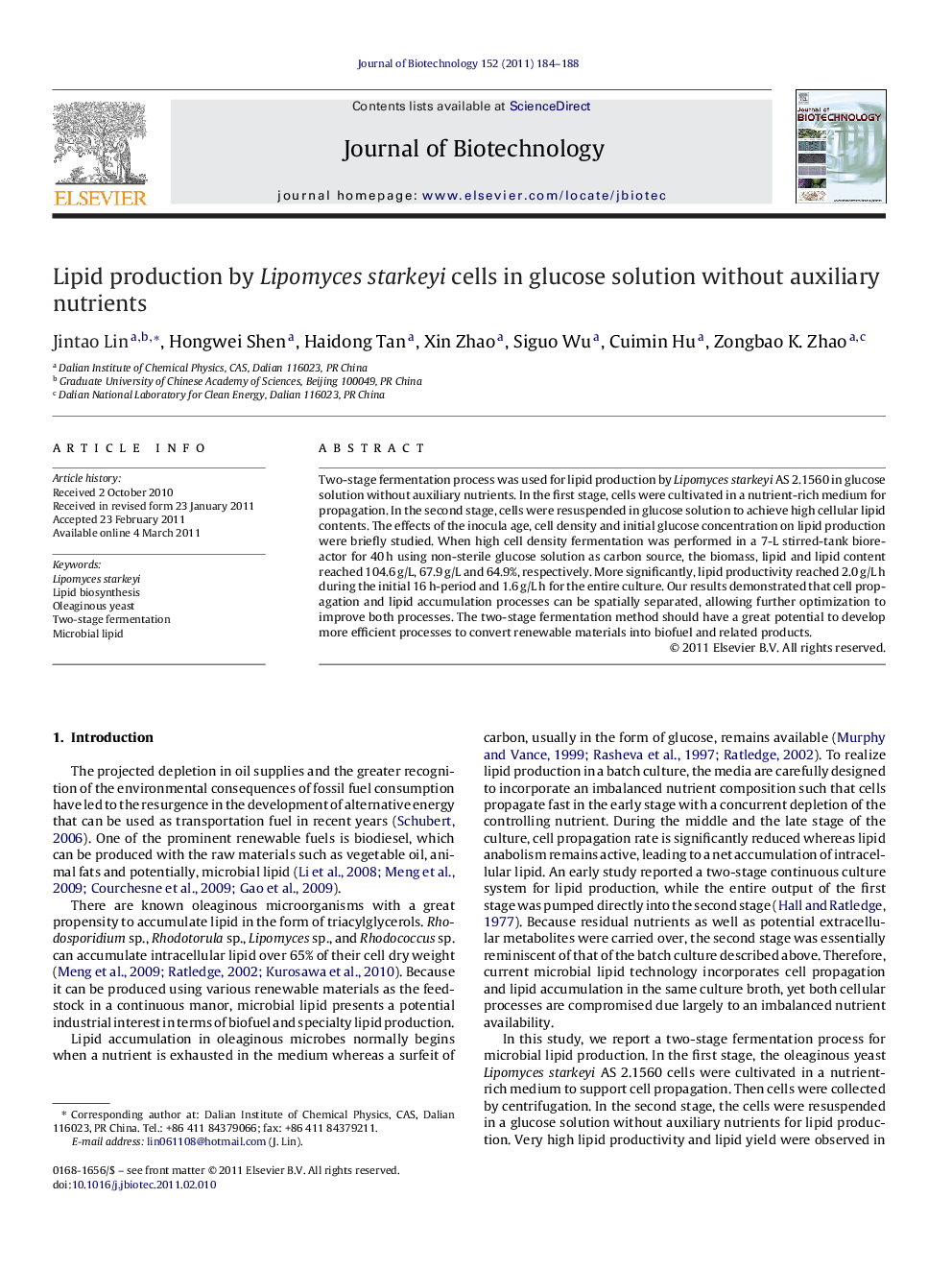| Article ID | Journal | Published Year | Pages | File Type |
|---|---|---|---|---|
| 24044 | Journal of Biotechnology | 2011 | 5 Pages |
Two-stage fermentation process was used for lipid production by Lipomyces starkeyi AS 2.1560 in glucose solution without auxiliary nutrients. In the first stage, cells were cultivated in a nutrient-rich medium for propagation. In the second stage, cells were resuspended in glucose solution to achieve high cellular lipid contents. The effects of the inocula age, cell density and initial glucose concentration on lipid production were briefly studied. When high cell density fermentation was performed in a 7-L stirred-tank bioreactor for 40 h using non-sterile glucose solution as carbon source, the biomass, lipid and lipid content reached 104.6 g/L, 67.9 g/L and 64.9%, respectively. More significantly, lipid productivity reached 2.0 g/L h during the initial 16 h-period and 1.6 g/L h for the entire culture. Our results demonstrated that cell propagation and lipid accumulation processes can be spatially separated, allowing further optimization to improve both processes. The two-stage fermentation method should have a great potential to develop more efficient processes to convert renewable materials into biofuel and related products.
